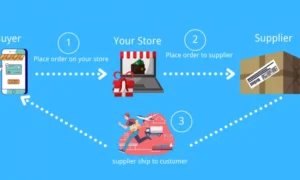India’s digital payment ecosystem has transformed dramatically over the past decade, becoming one of the world’s most sophisticated and diverse markets. With over 1.4 billion people and a rapidly growing digital economy, India presents unprecedented opportunities for international businesses. However, navigating the complex landscape of Indian payment methods requires expertise, compliance knowledge, and the right technology infrastructure.
Understanding India’s Payment Revolution
The Indian payment market has experienced remarkable growth, with digital transactions reaching over 74 billion in 2024. This surge is driven by government initiatives like Digital India, widespread smartphone adoption, and innovative payment solutions that have made digital transactions accessible to both urban and rural populations.
The Unified Payments Interface (UPI) has emerged as the backbone of India’s digital payment ecosystem. Launched in 2016, UPI has revolutionized how Indians make payments, enabling instant bank-to-bank transfers through mobile applications. Today, UPI processes over 10 billion transactions monthly, making it the world’s largest real-time payment system.
For international businesses, this presents both an opportunity and a challenge. While the market potential is enormous, the complexity of Indian payment preferences, regulatory requirements, and technical integration can be overwhelming without proper guidance.
Key Payment Methods Dominating the Indian Market
UPI: The Game Changer
UPI has fundamentally changed payment behavior in India. Unlike traditional payment methods, UPI allows users to send and receive money instantly using just a mobile number or UPI ID. Popular UPI apps like Google Pay, PhonePe, and Paytm have achieved massive adoption, with even small street vendors accepting UPI payments.
For businesses, UPI integration offers several advantages:
- Instant settlement capabilities
- Low transaction costs
- High success rates
- Widespread customer acceptance
- 24/7 availability
Credit and Debit Cards
Despite UPI’s popularity, card payments remain crucial for higher-value transactions and certain customer segments. India has over 900 million cards in circulation, with increasing preference for contactless and online payments. International businesses must ensure their payment systems support both domestic and international card networks.
Digital Wallets and Net Banking
Digital wallets like Paytm, Amazon Pay, and MobiKwik continue to serve specific use cases, particularly for prepaid services and cash top-ups. Net banking remains important for certain demographics and transaction types, especially among users who prefer traditional banking interfaces.
Emerging Payment Methods
The Indian market continues to innovate with new payment solutions:
- Buy Now, Pay Later (BNPL) services
- Cryptocurrency payment options
- QR code-based payments
- Voice-activated payments
- Biometric authentication systems
Regulatory Landscape and Compliance Requirements
Operating in India’s payment ecosystem requires strict adherence to Reserve Bank of India (RBI) regulations. The regulatory framework has evolved significantly, with recent guidelines focusing on data localization, customer protection, and system security.
Key Compliance Requirements
Data Localization: All payment system data must be stored within India, with no data mirroring allowed abroad. This applies to full end-to-end transaction details, payment sensitive data, and customer information.
PCI DSS Certification: Payment Card Industry Data Security Standard compliance is mandatory for all entities handling card data. This ensures secure handling of cardholder information throughout the payment process.
Know Your Customer (KYC): Robust customer verification processes are required, with specific documentation requirements for different transaction limits and customer categories.
Anti-Money Laundering (AML): Comprehensive monitoring systems must be in place to detect and report suspicious transactions as per RBI guidelines.
Recent Regulatory Updates
The RBI continues to update its framework to balance innovation with security. Recent changes include enhanced cybersecurity guidelines, revised operational risk management frameworks, and updated guidelines for payment aggregators and payment gateways.
Technical Integration Challenges and Solutions
Integrating with India’s payment ecosystem presents unique technical challenges that require specialized expertise and robust infrastructure.
API Integration Complexity
Indian payment systems often require integration with multiple APIs to support the full range of payment methods. Each payment method may have different technical requirements, authentication protocols, and response formats. A unified API approach can significantly simplify this complexity.
Real-time Processing Requirements
Indian consumers expect instant payment confirmations and real-time status updates. This requires robust infrastructure capable of handling high transaction volumes with minimal latency. Payment systems must be designed for 99.9% uptime with efficient failover mechanisms.
Mobile-First Design
With over 750 million smartphone users, India is predominantly a mobile-first market. Payment interfaces must be optimized for mobile devices, with intuitive user experiences that work across different screen sizes and network conditions.
Language and Localization
India’s linguistic diversity means payment interfaces should support multiple local languages. Hindi, English, and regional languages are crucial for maximizing customer acceptance and conversion rates.
Security Considerations for Indian Payment Processing
Security remains paramount in Indian payment processing, with sophisticated fraud prevention mechanisms required to protect both businesses and consumers.
Multi-Layer Authentication
Indian payment systems typically employ multiple authentication layers:
- Two-factor authentication (2FA) for sensitive transactions
- Biometric verification for high-value payments
- Device fingerprinting for fraud detection
- Behavioral analysis for unusual transaction patterns
Fraud Prevention Strategies
Advanced fraud detection systems use machine learning algorithms to identify suspicious patterns in real-time. These systems analyze transaction velocity, geographic patterns, device characteristics, and user behavior to flag potentially fraudulent activities.
Data Encryption Standards
End-to-end encryption is mandatory for all payment data transmission and storage. Advanced encryption standards (AES-256) and secure key management practices ensure data protection throughout the payment lifecycle.
Optimizing Success Rates and Customer Experience
Success rates in Indian payment processing can vary significantly based on implementation quality and user experience design. Optimizing these factors is crucial for business success.
Smart Routing Strategies
Implementing intelligent payment routing can significantly improve success rates. This involves directing transactions through the most reliable payment channels based on factors like:
- Historical success rates for specific payment methods
- Time of day and network conditions
- Transaction amounts and customer profiles
- Bank-specific performance patterns
Retry Mechanisms
Sophisticated retry logic can recover failed transactions without customer intervention. This includes automatic retries through alternative payment methods and intelligent timing to avoid network congestion periods.
Customer Communication
Clear, real-time communication about payment status reduces abandonment rates and improves customer satisfaction. Automated notifications via SMS, email, and in-app messages keep customers informed throughout the payment process.
Choosing the Right Payment Gateway Partner
Selecting an appropriate payment gateway partner is crucial for success in the Indian market. The ideal partner should offer comprehensive coverage of local payment methods while ensuring regulatory compliance and technical reliability.
Essential Features to Consider
Comprehensive Payment Method Support: Your payment gateway should support all major Indian payment methods, including UPI, cards, net banking, and digital wallets. This ensures you can serve all customer segments effectively.
Regulatory Compliance: Ensure your partner maintains all required certifications and compliance standards, including RBI authorization, PCI DSS certification, and data localization compliance.
Technical Reliability: Look for providers with proven track records of high uptime, fast transaction processing, and robust security measures. Technical documentation and integration support are equally important.
Local Expertise: Understanding Indian market nuances, customer behavior, and regulatory changes requires local expertise. Partners with deep market knowledge can provide valuable insights for optimization.
Scalability: As your business grows, your payment infrastructure should scale seamlessly. Ensure your partner can handle increasing transaction volumes without performance degradation.
Implementation Best Practices
Successful implementation of Indian payment solutions requires careful planning and execution across multiple dimensions.
Phased Rollout Strategy
Consider implementing payment methods in phases, starting with the most popular options like UPI and major card networks. This allows you to optimize each integration before adding complexity with additional payment methods.
Testing and Quality Assurance
Comprehensive testing across different devices, networks, and scenarios is essential. This includes:
- Functional testing of all payment flows
- Performance testing under high load conditions
- Security testing for vulnerability assessment
- User acceptance testing with diverse customer segments
Monitoring and Analytics
Implement robust monitoring systems to track payment performance, success rates, and customer behavior. Real-time dashboards help identify issues quickly and optimize performance continuously.
Customer Support Integration
Ensure your customer support team understands Indian payment methods and can assist customers with payment-related queries. Local language support can significantly improve customer satisfaction.
Future Trends and Innovations
The Indian payment landscape continues to evolve rapidly, with several emerging trends shaping the future of digital payments.
Central Bank Digital Currency (CBDC)
The Reserve Bank of India is piloting a digital rupee (e-INR) that could revolutionize payment processing. Early trials show promising results, and widespread adoption could create new opportunities for businesses.
AI and Machine Learning Integration
Advanced AI algorithms are being integrated into payment systems for improved fraud detection, personalized user experiences, and predictive analytics. These technologies help optimize success rates and reduce processing costs.
Voice and Conversational Payments
Voice-activated payment systems and chatbot integrations are gaining traction, particularly for recurring payments and simple transactions. These interfaces make payments more accessible for users with limited digital literacy.
Cross-Border Payment Innovation
New technologies are simplifying cross-border payments between India and other countries. This is particularly relevant for international businesses serving Indian customers or Indian businesses expanding globally.
Conclusion
India’s payment ecosystem offers tremendous opportunities for international businesses willing to invest in proper integration and local expertise. Success requires understanding the unique characteristics of Indian payment methods, maintaining strict regulatory compliance, and implementing robust technical infrastructure.
The key to success lies in partnering with experienced payment gateway providers who understand both the technical requirements and market nuances. With proper implementation, businesses can tap into India’s massive digital payment market while providing seamless experiences for their customers.
As India continues to innovate in the payments space, staying informed about regulatory changes and emerging technologies will be crucial for maintaining competitive advantage. The businesses that invest in comprehensive payment solutions today will be best positioned to capitalize on India’s continued digital transformation.
For international companies looking to expand into the Indian market, reliable payment gateway solutions can provide the foundation for successful market entry. With proper planning and execution, the Indian payment ecosystem can become a significant driver of business growth and customer satisfaction.
Whether you’re an established e-commerce platform or a emerging fintech startup, understanding and implementing comprehensive India payment solutions will be crucial for long-term success in this dynamic market.
For businesses ready to take the next step, exploring professional payment gateway services can provide the expertise and infrastructure needed to succeed in India’s complex but rewarding payment landscape.
































